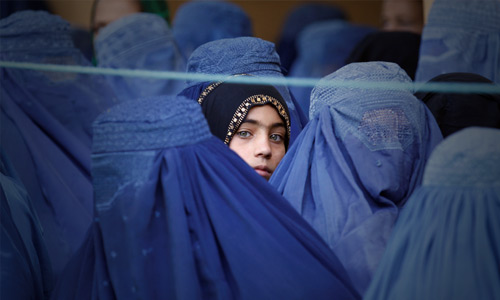The women’s freedom and condition has been one of the long controversial topics amidst all cultures in the world. After the Second World War, the presence of women in social and political arena has been largely increased. This began when the factories suffered from shortage of human forces and so women were given the opportunity to fill the gaps and then gradually entered to the political arena. Thereupon, women gained the right to vote in various western countries in late nineteenth century. But, in history of Afghanistan, women have a different story and yet they have been experiencing many ups and downs. Though the women participations have been greatly increased in last two decades, the new peace deals with Taliban has again raised some concerns about right and freedom of women in the country. This concern seems more serious when we imagine getting back to the past.
Given the traditional contexts of the country, since the foundation of Afghanistan up to kingdom of Amanullah Khan, Afghan women had no widespread economic and political participation. During Amanullah Khan’s time, the status of women changed slightly when his wife appeared in public on the occasion of Afghanistan’s Independence Day. Thereafter, women could partly appear in public but still had not active presence in social and political arena. After the fall of Amanullah Khan’s government, the situation of women returned to its former state and this condition continued until the decade of democracy. In the decade of democracy, however, the situation changed when the new constitution accepted some of the people’s rights and allowed the various social groups to claim their basic rights. After this time, the condition of women steadily worsened and reached to the worst level during the Taliban regime.
When Taliban invaded Afghanistan In 1995 the age of Fundamentalism began; the first and most important right that women lost was the right to learn. Schools came to be merely for boys. No woman could step out except she was fully covered in Hijab. They were not allowed to work. They were only like dolls behind walls. It was the worst for women that Taliban laws provide men with the chance to abuse women. In a sense, women were aliens and refugees of the time as no one let them educate and seek the ideal life. No constitution existed to give women the fundamental rights, the right to liberty, equality and pursuit of happiness. Liberty, equality and democracy did stop at that time and the dignity of women was merely defined to stay hidden and protect themselves from strange gazes. The socio-political functions of women had been cut to zero. Eventually, Taliban did not last for more than 6 years. After September 11 attack in 2001, the USA attacked on Taliban and this way Taliban period came to the end the freedom of women has restarted.
In 2001 democracy and liberty unprecedentedly revived and the age of fundamentalism also ended when the new era began. In 2001 Karzai became the transitional president while there were several women among his cabinet ministers. Thus, when the constitution of the country was approved in 2004, based on the Loy Jirga held in 2003, Women and men got to enjoy the same rights in accordance with the new constitution. Women began to enjoy all the primary rights. Even, according to article 83 of the election law which approved in 2004, 27% of parliament seats were specified for women as an obligatory quota. It means, out of 249 parliament seats, 68 seats were allocated for women and so Afghanistan got the 55th position in the world in terms of women participation in the parliament. Therefore, the new era is considered the best era for women participation and freedom.
Now that Afghanistan is in the eve of peace agreement, the progress of Afghan peace process in Qatar has created some hopes and also some fear among women community in Afghanistan. The hopes are raised because of a possible end to the long term conflicts in which the women were the most vulnerable group in the country. The fear or concerns are raised because Afghan women have the bitterest experience and memory from the past. As aforementioned, in 1995, when Taliban took over the power, women were the first group who were put in cage depriving from social and educational activities. Legally, there was no constitution existed to give women their fundamental rights, the right to liberty, equality and pursuit of happiness. Unfortunately, it was happening during the Taliban period in Afghanistan. Liberty, equality and democracy did stop at that time and gave way to fundamentalist, sexist, prejudice and traditional absolutist. Dignity for women was defined to stay hidden and protect themselves from men’s gazes. Overall, the socio-political position of women had been declined to zero.
Therefore, Afghan women do not want peace at any cost. The Afghan allies and negotiators are expected to remain committed for protection women’s rights and freedom. The women of today are not the women of twenty years before and so Taliban must be convinced to respect the two decades achievement costly attained in the country. However, the Afghan government has always assured women that their rights will not be affected negatively after a peace deal with the Taliban. According to experts, no peace process is perfect unless considering justice, inclusiveness and sustainability. Hence, their rights and freedom must not be dealt at any cost.
Home » Opinion » The ups and downs of women’s condition in Afghanistan
The ups and downs of women’s condition in Afghanistan
| Mohammad Zahir Akbari

